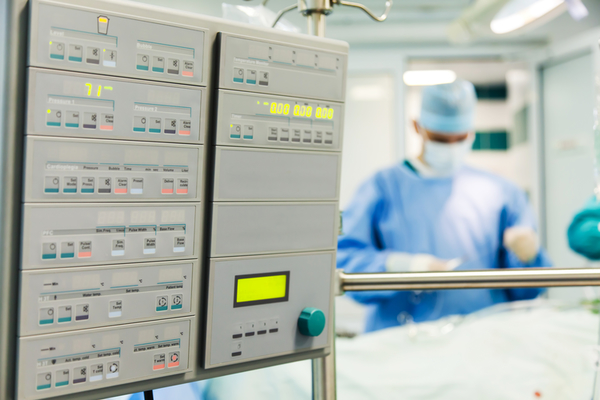
Anesthesiologists are physicians who administer anesthetics (medication) that decrease or remove sensations of pain before, during, or following surgery or another medical operation. Just as technical as any expert medical physician, anesthesiologists use physicians or surgeons and personalize anesthesia following a patient's health history.
In 2018 31,200 anesthesiologists were functioning in the USA in hospitals, outpatient surgical facilities, clinics, and doctor's offices.
Duties of Anesthesiologists
Anesthesiologists have a specialization in pain management, along with a large selection of duties.
A patient might feel distressed for some time after the process gets finished, so the anesthesia must assist the patient transition with, through, and from this process with comparative ease. This is referred to as perioperative medicine, the specialization of anesthesiologists.
If you have done your work well as an anesthesiologist, the patient will normally don't have any complications arising from the anesthesia or pain medicine during or following the process. On infrequent occasions, the medication administered to eliminate pain may create responses in patients. While this occurs, anesthesiologists revive the individual to a secure position for the process to continue to be tried yet another day.
What kinds of anesthesia do physician anesthesiologists supply?
Doctor anesthesiologists are often in charge of providing the following Kinds of anesthesia maintenance:
- General anesthesia is given via an anesthesia mask or IV and which makes you get rid of consciousness. It's used for important surgeries, like a knee replacement or open-heart operation.
- IV sedation makes you feel relaxed and could lead to a variety of levels of awareness. Based upon the process, the amount of sedation may vary from minimal (which makes you drowsy but ready to speak ) to profound (meaning that you won't recall the process ). IV sedation is occasionally combined with regional or local anesthesia.
- Pain medicine to numb a massive region of the human body, like in the waist down, is given through an injection or via a tiny tube called a catheter. You'll be awake but unable to sense the region that's number. This sort of anesthesia, such as spinal cubes and epidurals, frequently is utilized during childbirth and for operations of their arm, abdomen, or leg.
- Nearby anesthetic is an injection that numbs a small area of the body in which the process has been done. You'll be awake and awake but feel no pain. This is frequently used for processes like removing a blister, stitching a heavy dip, or setting a broken bone.
The same as every specialist medical physician, a high amount of specialization values significant cover. Therefore, anesthesiologists make six characters nearly instantly. Without qualified anesthesiologists, a number of the very crucial and pressing medical procedures (like surgery) can't be carried out.

Anesthesiologists training, education, and certification
Like many medical physicians, anesthesiologists must finish graduate, undergraduate, and residency applications before starting their careers. In all, you must plan on at least 15 decades of formal training following high school before being able to practice.
- Education:
Each anesthesiologist has to finish a four-year diploma in pre-med or a science-related field. If you would like traditional medication, you will probably need to pursue the MD. But if you prefer more holistic, alternative medicine, you may prefer a DO program.
- Certification:
Each anesthesiologist who has graduated from medical college has to pass a USMLE exam (United States Medical and Licensing Examination).
- Training:
Anesthesiologists should also complete a four-year residency schedule before practicing by themselves.
Here is a Few of the most important abilities that anesthesiologists should have:
- Critical Thinking: Anesthesiologists have to have the ability to analyze which kind of medication is ideal for the individual based upon their age and medical history. Furthermore, certain procedures often need special anesthetics or variants of an embryo kind.
- Attention to Detail: The tiniest aspect of a patient's medical history may indicate major warning signs that a patient must avoid certain sorts of medicine. Anesthesiologists have to have the ability to detect early signs of adverse reactions to drugs before, during, and following a significant medical procedure.
- Tracking: As a medical practitioner, you'll be responsible for monitoring any changes in vital signs and the individual's condition during operation.
- Problem Solving: If something goes according to plan together with your individual, you need to be ready to take care of any emergency which should arise. It's not unusual for anesthesia to create sudden reactions from the patient throughout the process, thus requiring intervention from the anesthesiologist. Most of all, since there are usually dangers related to specific sorts of medication, it's all up to you to ensure the individual (and their loved ones ) fully comprehend those dangers.
Specialization area of anesthesiologist
Each anesthesiologist is trained to encourage surgical intervention, but a lot of them also specialize in particular locations.
All these comprise :
- The cardiac operation, for a heart operation
- the pediatric operation, for pain control and anesthetics in children
- neuroanesthesia, associated with the operation for your nervous system, brain, and spinal cord
- obstetrics, supplying pain relief during labor and delivery
- Other aspects of health care comprise pediatric anesthesia (pain control and anesthetics in children) care for the dying in a hospice and palliative care.
Job Outlook
As improvements in the health care area keep growing, the need for qualified anesthesiologists is powerful and is expected to have more power. It's one of the very in-demand tasks within the whole medical community.
As stated by the U.S. Bureau of Labor Statistics, the amount of anesthesiologist occupations is forecast to grow 15 percent by 2026. Within the wider category of doctors and surgeons, anesthesiologists represent only 5 percent of their workforce.
Work Environment
The ones that operate in anesthesiology mostly work under the very same requirements as doctors and surgeons. A substantial difference from different physicians, however, is that anesthesiologists seldom meet their patients before the afternoon of the process. Generally, they'd get their orders ahead of the process, together with the individual's medical records and background.
Work Schedule
Much like doctors, your program might be highly intermittent. Although you might not work as long as could a typical doctor or physician, because of the overall lack of anesthesiologists from the U.S., you will probably be working full-time hours to keep up with this work.

Leave Comment Below
0 Comment(s)